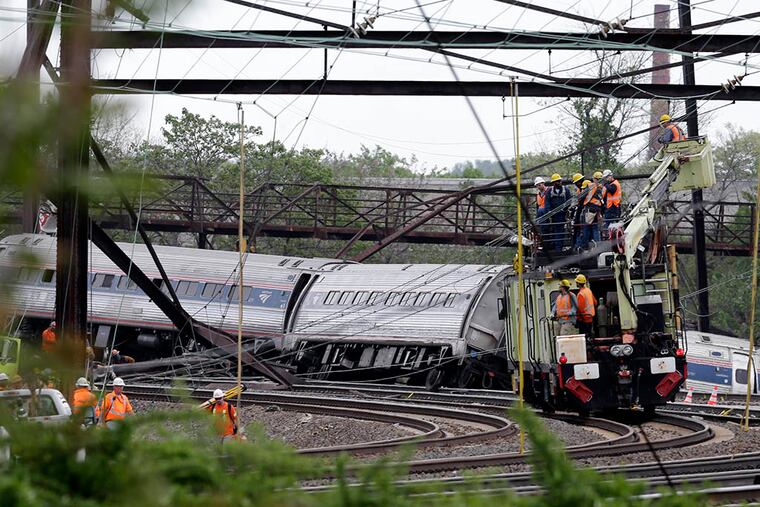The physics of a tight railroad curve
When you get right down to it, it was a question of physics. At the site of the Amtrak derailment on Tuesday, the track had a curvature of four degrees. Imagine a giant circle with a diameter of nearly 2,900 feet, more than a half-mile. The track's path would trace the outline of that circle.

When you get right down to it, it was a question of physics.
At the site of the Amtrak derailment on Tuesday, the track had a fairly significant curve. Imagine a giant circle with a diameter of nearly 2,900 feet, more than a half-mile. The track's path would trace the outline of that circle.
The track also had a "superelevation" of five inches, meaning the outer rail was five inches higher than the inner rail.
Given those parameters, a locomotive pulling seven Amtrak-size cars could safely travel up to about 55 m.p.h., said Pennsylvania State University engineer Steve Dillen, who performed a rough calculation at The Inquirer's request.
Early indications are that it was going nearly twice that fast, a National Transportation Safety Board member said Wednesday at a news conference.
Exactly how much faster will have to wait for detailed data from an onboard "event recorder," analogous to what is known on airplanes as a black box. On trains, these devices electronically track speed, direction, distance, throttle position, and the use of brakes, among other data.
"It'll tell them everything that train did," said Danny Gilbert, a rail safety consultant based in Roanoke, Va.
Such recorders have been required on trains for years, but data sometimes have been lost in violent accidents. In 2005, the Federal Railroad Administration enacted rules requiring the devices to be crash-resistant.
Speed is typically measured using an axle-mounted generator that pulses with every revolution. Such generators often are mounted on more than one axle; their outputs can then be compared to correct any issues with slipping and sliding. The data is then transmitted to the event recorder.
Among companies that make the electronic boxes are Wabtec Corp. in Wilmerding, Pa., and Germany-based Deuta, which has supplied such components to SEPTA.
It was not immediately known who made the box or boxes on the Amtrak train that derailed. Mayor Nutter said they had been taken to an Amtrak facility in Delaware for analysis.
The section of track where the train derailed had a 50 m.p.h. speed limit.
Dillen, who coordinates the rail transportation engineering program at Penn State Altoona, said an additional 5 m.p.h. would probably be OK. Beyond that, he could not say.
Determining the exact tipping point, he said, would require a more detailed analysis involving the train's center of gravity.
215-854-2430 @TomAvril1